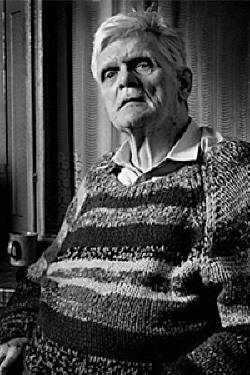 John Francis Alexander Heath-Stubbs OBE (9 July 1918 – 26 December 2006) was an English poet and translator. He is known for verse influenced by classical myths, and for a long Arthurian poem, Artorius (1972).
John Francis Alexander Heath-Stubbs OBE (9 July 1918 – 26 December 2006) was an English poet and translator. He is known for verse influenced by classical myths, and for a long Arthurian poem, Artorius (1972).
Queer Places:
University of Oxford, Oxford, Oxfordshire OX1 3PA
Zennor, Saint Ives TR26 3BY, UK
Kensal Green Cemetery
Royal Borough of Kensington and Chelsea, Greater London, England
 John Francis Alexander Heath-Stubbs OBE (9 July 1918 – 26 December 2006) was an English poet and translator. He is known for verse influenced by classical myths, and for a long Arthurian poem, Artorius (1972).
John Francis Alexander Heath-Stubbs OBE (9 July 1918 – 26 December 2006) was an English poet and translator. He is known for verse influenced by classical myths, and for a long Arthurian poem, Artorius (1972).
Heath-Stubbs was born at Streatham, London. The family later lived in Hampstead. His parents were Francis Heath-Stubbs, a non-practising, independently wealthy solicitor,[1][2] and his wife Edith Louise Sara, a concert pianist under her maiden name, Edie Marr. His boyhood was largely spent near the New Forest.[3] The Stubbs family were gentry from Staffordshire; Heath-Stubbs's great-great-grandfather Joseph, a younger son, married Mary, the only child of a judge named Heath, this eventually becoming part of the family name.[4][5] Heath-Stubbs stated in his autobiography Hindsights (1993), "In my grandfather's day, the last of the Heaths made us Stubbses her heirs, so long as we changed our name to Heath-Stubbs." Furthermore, "according to family tradition", they were related to the pamphleteer John Stubbs, who was sentenced to the loss of his right hand by Queen Elizabeth I for his opposition to negotiations for her marriage to Francis, Duke of Anjou, and yet remained a staunch royalist.[6] "Family pride, combining with a poised self-irony" marked Heath-Stubbs's poem Epitaph, beginning, "Mr Heath-Stubbs as you must understand/Came of a gentleman's family out of Staffordshire/Of as good blood as any in England/But he was wall-eyed and his legs too spare."[7][8]
Heath-Stubbs was educated at Bembridge School on the Isle of Wight and at the age of 21 entered Queen's College, Oxford, where he read English, finding the lectures of Nevill Coghill and C. S. Lewis particularly rewarding. He became a poetry adviser to the firm of Routledge, co-editing Eight Oxford Poets in 1941, with Sidney Keyes and Michael Meyer,[3] and helping to edit Oxford Poetry in 1942–1943. By that time Heath-Stubbs had recognized his homosexuality, though his love for the poet and artist Philip Rawson was returned only in the form of strong friendship. Heath-Stubbs in the early 1940s reverted to regular Anglican worship.[3] Heath-Stubbs held the Gregory Fellowship of Poetry at Leeds University in 1952–1955, followed by professorships in Alexandria, Egypt in 1955–1958 and Ann Arbor, Michigan in 1960–1961, and teaching posts at the College of St Mark and St John in Chelsea in 1962–1972 and at Merton College, Oxford for twenty years from 1972. He lived for a time in the 1950s at Zennor in Cornwall. Heath-Stubbs's translations include work by Sappho, Horace, Catullus, Hafiz, Paul Verlaine and Giacomo Leopardi. He was a central figure in British poetry in the early 1950s, editing, for example, the poetry anthology Images of Tomorrow (1953) and with David Wright the Faber Book of Twentieth Century Verse. He was elected to the RSL in 1954, awarded the Queen's Gold Medal for Poetry in 1973, and appointed OBE in 1989.[9] Although diagnosed with glaucoma at the age of 18, a condition he inherited from his father,[10] he was able to read with his left eye until 1961, but was completely blind from 1978.[3] Nonetheless, he continued to write almost to the end. A documentary film about him, entitled Ibycus: A Poem by John Heath-Stubbs, was made by the Chilean director Carlos Klein in 1997. John Heath-Stubbs died in London on 26 December 2006, aged 88.[9]
As a Romantic poet, Heath-Stubbs's diction was strong, yet subtle. Running through his work was a nostalgia for "classicism". He was consciously literary and his work elaborately wrought rather than spontaneous, which meant his was not the kind of poetry likely to have mass appeal. However, his devotion to the craft of poetry makes his work impressive. As Edward Lucie-Smith put it, "Few writers of his time had a deeper knowledge of the English language, or cared for it more devotedly."[11]
My published books: